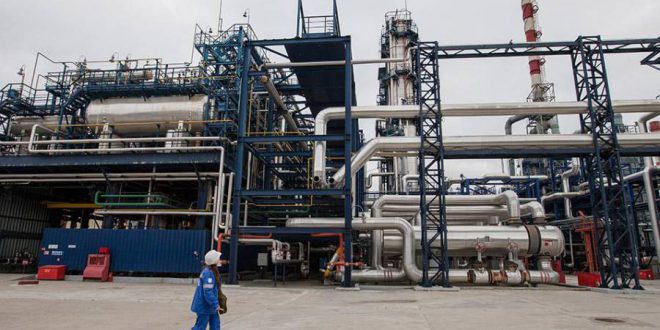Russia’s oil industry—a vital source of budget revenues—is already showing signs of slowdown as Western buyers shun Russian oil while Moscow struggles to replace lost sales in the West with sales in emerging Asian markets. The war Putin started in Ukraine is hitting home: storage capacity is full, infrastructure and shipping logistics prevent Russian from exporting all the oil unwanted in the West to China and India, refineries are cutting run rates as product storage is overflowing, and as a result, companies are scaling back crude production.
This comes at a time when Russia, as a key member of the OPEC+ pact, is allowed to raise its crude oil production by more than 100,000 barrels per day (bpd) each month as the alliance is unwinding its cuts by a planned 400,000 bpd per month.
Russia continues to reap a lot of export revenues from its oil amid soaring prices. Its oil is not (yet) officially under embargo or sanctions in the European Union, which received nearly half—48 percent—of all Russian crude exports prior to the war in Ukraine.
After the Russian invasion, however, many European buyers are steering clear of Russia’s oil, unwilling to finance the war in Ukraine by paying Putin money for his oil.
Revenues from oil and gas-related taxes and export tariffs accounted for 45 percent of Russia’s federal budget in January 2022, according to estimates from the International Energy Agency (IEA). Total export revenues for crude oil and refined products currently amount to around $700 million per day, the IEA said this week.
While money still flows to Russia, its oil industry is already showing signs of distress, which could worsen in the coming months as more buyers shun Russian crude and oil products.
In the first ten days of April, Russia’s crude oil and condensate production slumped to an average of 10.365 million bpd, data obtained by Energy Intelligence showed this week. That’s more than 600,000 bpd below the March average crude and condensate output of 10.996 million bpd.
According to the IEA, Russian oil supply and exports continue to fall, with April losses expected to average 1.5 million bpd as Russian refiners extend run cuts, more buyers shun barrels, and Russian storage fills up. From May onwards, nearly 3 million bpd of Russian production could be offline due to international sanctions and self-sanctioning from buyers.
The “buyers’ strike” has already started to force Russian refiners to reduce production, Gunvor CEO Torbjorn Tornqvist said last month.
“What does that mean? It means more crude oil will need to be exported instead of the products, and we believe that is not possible and will lead to cutbacks in Russian production,” Tornqvist said at the Financial Times Commodities Global Summit in March, as carried by Bloomberg.
Due to the sanctions on Russia, fuel oil deliveries have plunged and storage is brimming with fuel, Vagit Alekperov, the president of Russia’s second-largest oil producer Lukoil, wrote at the end of March in a letter to Deputy Prime Minister Alexander Novak obtained by Russian daily Kommersant. Lukoil suggests redirecting fuel oil to power plants in order to avoid a shortage in storage capacity, Alekperov said in the letter obtained by Kommersant.
The Taif refinery in the Tatarstan region in Russia has shut because of product overstocking, three sources with knowledge of the matter told Reuters earlier this month.
Russia doesn’t have enough storage capacity for oil and products, analysts say, which, in the face of “buyers’ strikes”, would inevitably lead to reduced crude oil production.
“There is the risk you permanently lose some production potential,” Helge André Martinsen, senior oil analyst at investment bank DNB Markets, told The Wall Street Journal this week.
In another sign that Russia could be struggling to sell all of its cargoes, Transneft, the Russian oil pipeline operator, has reportedly informed local oil companies that it would be capping the intake of yet-to-be-sold crude because of full storage.
Putin is confident that Russia can find new willing buyers for its oil in Asia. Buyers in Asia—especially China and India—are taking some of the oil unwanted in the West, but logistics, high freight rates, insurance, bank guarantees, and payment hurdles prevent willing buyers in Asia from purchasing all the oil Russia has traditionally sold on the European market.

 Iran Energy News Oil, Gas, Petrochemical and Energy Field Specialized Channel
Iran Energy News Oil, Gas, Petrochemical and Energy Field Specialized Channel



